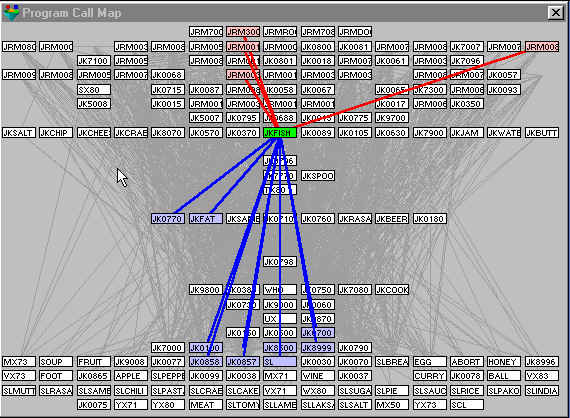MakeSense
Typical Uses
- Application migration to a new platform
- Re-engineering an application
- Improving the development processes (higher quality, less re-work)
Do you recognise these issues?
- Difficult to understand.
- New patches added to old patches.
- Documentation is out of date or incomplete.
- Knowledge of the system is scattered.
- New staff are expensive to train.
- The full impact of proposed changes is difficult to determine.
- Estimation of change is difficult, time consuming and unreliable.
McRae IT can assist by providing MakeSense, a knowledge management and process improvement product for COBOL and Visual Basic Systems.
Would you like to save money?
Would you also like:
- A higher quality system?
- Less errors and rework?
- Better estimates of change?
- Staff who can train themselves?
- Documentation which improves over time?
The Solution
 MakeSense is a software product which "makes sense" of large complex computer applications.
MakeSense is a software product which "makes sense" of large complex computer applications.
MakeSense analyses a complex IT system and presents it in a visual (GUI) environment, thereby allowing a user to navigate and understand the application in an intuitive way. Developers are able to track their way through complicated applications by viewing software components and their relationships. Documentation is tightly integrated with MakeSense so that a user has all the available information in one place. User comments can be added to the documentation "on the fly" which means that changes are not lost. The end result is continuous documentation improvement..
MakeSense is available with a variety of analysis levels and formats:
![]()
Analogy:
Imagine that you are managing the construction of the Athens Olympic Complex from Melbourne? Every day, new pavilions are built, new access roads are put in, etc. Clearly you would need a map of the construction site which is updated on, say. a weekly basis. You could ask people on-site to run around and update last week's map and send it down to Melbourne. However, this is time consuming and may not be accurate. Ideally this map would be generated automatically from satellite and other data on a periodic basis. Of course you would need to be able to click on a building and see how the rooms look, etc. You might also want to click on the room and see whether the plumbing is finished, etc.
So it is when building large complex systems. MakeSense automatically produces a map of all the software components and their relationships. You can click on a component and see its relationship with other components. You can see the sub components. Each component has the documentation with the component and in some cases, has complexity measures.
Features:
- Visually shows component relationships
- Software components extracted from source application system using reverse engineering
- Application specific rules (and exceptions) are used in reverse engineering
- Shows "big picture of application" with hyperlinks between components for drill down or cross links
- Shows program structure and complexity
- Shows program and file flowcharts
- Shows permissible values for fields
- Shows movement of values between fields, groups and database elements
- Business functions can be linked to the software components
- Elementary processes (transactions) and logical files can be linked to software components to assist with FSM (Functional Size Measurement) and function point counting.
- Documentation is tightly integrated with software components
- User comments on documentation can be extracted and processed by the documentation controller.
Benefits:
- Knowledge is managed effectively and can be continuously improved over time
- "Organisational memory" is improved
- Decreased project costs in tandem with increased quality of software. Productivity of knowledge workers is estimated to increase by 5% and this will lead to substantial savings (i.e. a payback period of less than a year)
- Users can upskill (i.e. learn about the application) on a "need to know" basis
- Documentation and knowledge of the application will continuously improve
- Basis for Functional Size Measurement
Target Audience:
- Business analysts, programmers, testers, function point counters
- Operations staff
- Support staff